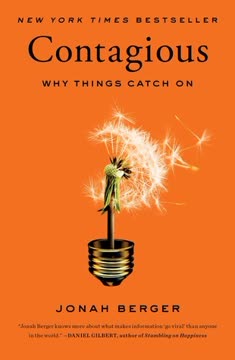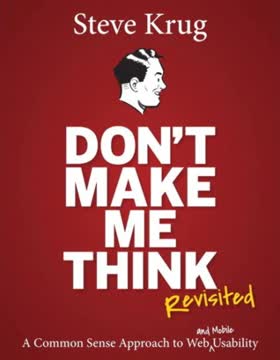重点摘要
1. 钩子模型:构建习惯养成产品的框架
习惯养成技术是推动我们日常生活的无形引擎。
钩子模型由四个阶段组成:触发、行动、可变奖励和投资。这个循环在重复时会创造强大的用户习惯。像Facebook、Twitter和Pinterest这样的公司成功地实施了这个模型,创造了用户频繁且自发使用的产品。
关键组成部分:
- 触发:行为的启动器
- 行动:期待奖励的最简单行为
- 可变奖励:满足用户需求的同时让他们渴望更多
- 投资:用户将有价值的东西投入系统,增加他们回归的可能性
通过理解和实施这些阶段,产品设计师可以创造与用户问题和需求相一致的体验,最终导致自动化行为和增加的参与度。
2. 触发:引发用户行为的火花
外部触发包含信息,告诉用户接下来该做什么。
**触发有两种类型:**外部和内部。外部触发是环境线索,如电子邮件、应用图标或通知。内部触发自动在脑海中显现,通常是负面情绪,如无聊、恐惧或犹豫。
有效的触发:
- 时机恰当且可操作
- 激发即时和长期的参与
- 随时间推移将用户从外部触发转变为内部触发
为了创造习惯养成产品,设计师必须理解用户的内部触发,并使用外部触发来引发初始参与。随着用户反复使用产品,他们会在产品和内部需求之间形成关联,最终导致自动化行为。
3. 行动:简化通往奖励的路径
为了增加行为发生的可能性,福格建议设计师关注用户在那一刻最稀缺资源的简化。
简化是关键,驱动用户行动。行动越容易执行,用户越有可能去做。这个阶段借鉴了福格行为模型,该模型指出行为发生需要三个元素的汇合:动机、能力和触发。
增加能力的方法:
- 减少所需时间
- 降低金钱成本
- 减少体力消耗
- 降低认知负荷
- 符合社会规范
- 使行动非例行化
像Google、Twitter和Instagram这样的成功产品已经掌握了简化用户行动的艺术。通过消除障碍并使期望的行为更容易执行,这些公司增加了用户参与度并形成了强烈的习惯。
4. 可变奖励:保持用户参与的不确定刺激
可变奖励是公司用来吸引用户的最强大工具之一。
可变性的力量在于它能够提高用户的参与度和动机。当奖励是不确定的时,它们会创造一种专注的心态,激活大脑的多巴胺系统并抑制与判断和理性相关的区域。
三种类型的可变奖励:
- 部落:来自他人的社会奖励
- 狩猎:寻找物质资源或信息
- 自我:掌握或完成的内在奖励
像Facebook(部落)、Twitter(狩猎)和Codecademy(自我)这样的公司有效地利用这些奖励类型来吸引用户回归。通过满足用户需求的同时让他们渴望更多,可变奖励创造了强大的驱动力,使用户不断回到产品中。
5. 投资:用户努力如何增加产品价值
投资阶段的核心理念是利用用户的理解,即服务会随着使用(和个人投资)而变得更好。
投资阶段对于创造长期参与至关重要。它涉及用户将有价值的东西投入系统,从而增加他们回归的可能性。这个阶段利用了几个心理学原理,包括沉没成本谬误和赋值效应。
投资形式:
- 时间
- 数据
- 努力
- 社会资本
- 金钱
投资可以改善未来的服务,邀请用户在平台上“存储价值”,或促使用户进行进一步的投资。例子包括LinkedIn的资料完成度、Tinder的滑动机制和Snapchat的连击功能。通过鼓励小额投资,产品随着时间的推移对用户变得更有价值,增加了持续参与的可能性。
6. 设计习惯养成技术的伦理考量
钩子模型的核心是改变人们的行为,但构建有说服力的产品的力量应谨慎使用。
操纵矩阵是企业家评估其习惯养成产品伦理的工具。它提出了两个关键问题:“我自己会使用这个产品吗?”和“这个产品会实质性地改善用户的生活吗?”
四种类型的创造者:
- 促进者:创造他们会使用并相信能改善用户生活的产品
- 小贩:相信他们的产品能改善生活但自己不会使用
- 娱乐者:创造他们会使用但不一定改善生活的产品
- 经销商:创造他们不会使用且不相信能改善生活的产品
产品创造者应努力成为促进者,创造真正改善用户生活的产品,同时注意潜在的负面影响。这种方法不仅符合伦理考量,还增加了长期成功的可能性。
7. 识别习惯养成产品的机会
每当新技术突然使某种行为变得更容易时,新机会就会诞生。
创新机会通常来自技术进步、用户行为变化或界面设计的转变。通过识别这些机会,企业家可以创造解决真实用户需求并形成持久习惯的产品。
探索领域:
- 初期行为:可能成为主流的早期采用模式
- 使能技术:使某些行为更容易的新基础设施
- 界面变化:用户与技术互动方式的转变
例子包括智能手机的兴起使移动优先产品成为可能,社交媒体平台利用用户生成内容,以及可穿戴技术为健康和健身应用创造新可能性。通过关注这些变化,企业家可以识别独特的机会来创造习惯养成产品。
8. 习惯测试过程:衡量和改进用户参与度
习惯测试有助于发现产品忠实用户,了解哪些产品元素形成习惯(如果有的话),以及这些方面如何改变用户行为。
习惯测试过程包括三个步骤:识别、编码和修改。这种迭代方法帮助产品设计师衡量和改进其产品的习惯养成潜力。
习惯测试步骤:
- 识别:确定你的忠实用户是谁
- 编码:了解这些忠实用户采取的行动
- 修改:调整你的产品以鼓励更多用户遵循相同的路径
关键指标包括使用频率、忠实用户的百分比和特定行为模式。通过不断根据用户数据测试和改进产品,你可以增加其习惯养成潜力和整体成功率。
最后更新日期:
FAQ
What's "Hooked: A Guide to Building Habit-Forming Technology" about?
- Author and Purpose: Written by Nir Eyal with Ryan Hoover, the book explores how to create habit-forming products using psychological principles.
- Core Concept: It introduces the Hook Model, a four-step process that companies use to encourage user habits.
- Target Audience: The book is aimed at entrepreneurs, product managers, and designers interested in understanding user behavior.
- Practical Application: It provides actionable insights for building products that people use regularly without relying on expensive marketing.
Why should I read "Hooked: A Guide to Building Habit-Forming Technology"?
- Understand User Behavior: Gain insights into the psychological triggers that drive user engagement and retention.
- Improve Product Design: Learn how to design products that become a natural part of users' routines.
- Competitive Advantage: Discover how habit-forming products can provide a significant edge in crowded markets.
- Ethical Considerations: The book also addresses the moral implications of creating addictive technologies.
What is the Hook Model in "Hooked"?
- Four Phases: The Hook Model consists of Trigger, Action, Variable Reward, and Investment.
- Trigger: Initiates the behavior, can be external (notifications) or internal (emotions).
- Action: The simplest behavior in anticipation of a reward.
- Variable Reward and Investment: Keeps users engaged by offering unpredictable rewards and encouraging them to invest in the product.
What are the key takeaways of "Hooked: A Guide to Building Habit-Forming Technology"?
- Habit Formation: Understand how habits are formed and the role of frequency and perceived utility.
- User Engagement: Learn how to create products that users return to without external prompting.
- Investment Phase: Discover how user investment increases the likelihood of repeated engagement.
- Ethical Design: Consider the moral responsibilities when designing habit-forming products.
How does "Hooked" define a habit?
- Automatic Behavior: Habits are defined as behaviors done with little or no conscious thought.
- Triggered by Cues: They are often triggered by situational cues, either external or internal.
- Engineered Actions: The book explains how products can be designed to become habitual.
- Impact on Behavior: Habits significantly alter everyday behavior as intended by designers.
What are the types of triggers in the Hook Model?
- External Triggers: These include notifications, emails, and app icons that prompt user action.
- Internal Triggers: These are emotions or thoughts that cue behavior without external prompts.
- Transition from External to Internal: Successful products transition users from external to internal triggers.
- Example: A user might initially be prompted by a notification but later use the product out of habit.
What role do variable rewards play in the Hook Model?
- Create Cravings: Variable rewards create a craving that drives users to return.
- Types of Rewards: The book identifies three types: rewards of the tribe (social), hunt (material), and self (intrinsic).
- Unpredictability: The unpredictability of rewards keeps users engaged.
- Example: Social media platforms use likes and comments as variable rewards.
How does the investment phase work in the Hook Model?
- User Effort: Users invest time, data, or effort, increasing the product's value to them.
- Future Rewards: Investments are about anticipating future rewards, not immediate gratification.
- Stored Value: The more users invest, the more valuable the product becomes to them.
- Example: Following someone on Twitter increases the likelihood of returning to the platform.
What are the ethical considerations discussed in "Hooked"?
- Manipulation Concerns: The book addresses the potential for products to become addictive.
- Moral Responsibility: Designers have a responsibility to ensure their products improve users' lives.
- Manipulation Matrix: A tool to assess whether a product is ethical based on its impact and the designer's use.
- Facilitator Role: Encourages creating products that the designer would use and that improve lives.
What are some real-world examples used in "Hooked"?
- Instagram: Used as an example of how external triggers can become internal.
- Pinterest: Demonstrates the use of variable rewards through endless scrolling.
- Twitter: Shows how user investment in followers increases engagement.
- Bible App Case Study: Illustrates the application of the Hook Model in a religious context.
How can I apply the concepts from "Hooked" to my product?
- Identify Triggers: Determine what internal and external triggers will prompt user action.
- Simplify Actions: Make the desired user actions as easy as possible.
- Incorporate Variable Rewards: Use unpredictability to keep users engaged.
- Encourage Investment: Design ways for users to invest in the product, increasing its value to them.
What are the best quotes from "Hooked" and what do they mean?
- "First-to-mind wins": Highlights the importance of being the go-to solution for users.
- "Habits give companies greater flexibility to increase prices": Explains the economic advantage of habit-forming products.
- "If it can’t be used for evil, it’s not a superpower": Discusses the dual nature of habit-forming technology.
- "The Hook Model is fundamentally about changing people’s behaviors": Emphasizes the core purpose of the book's framework.
评论
《上瘾》因其关于构建习惯养成产品的清晰框架而获得了大多数正面评价。读者们欣赏书中可操作的见解和用户参与背后的心理原则。一些人批评该书的篇幅和“钩住”用户的伦理问题。钩子模型的四个步骤——触发、行动、可变奖励和投入——被广泛讨论。许多人认为它对产品设计和理解用户行为非常有价值,而另一些人则质疑其操控潜力。总体而言,尽管对其方法有一些保留,但它被认为是企业家和产品经理的有用读物。
Similar Books















